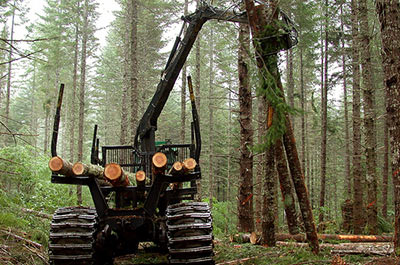By Alexandra Bower

American Forests Science Advisory Board member Dr. Jerry Franklin of the School of Environmental and Forest Science at the University of Washington was a recent witness in the Congressional Hearing for the Senate Committee on Energy and Natural Resources regarding the Oregon and California Land Grant Act of 2013 (S. 1784). The bill, sponsored by Senator Ron Wyden (D-Ore.), aims to bolster revenue for struggling lumber counties in Oregon without causing harm to sensitive lands, protected forests and endangered wildlife, while focusing on revenue from federal harvests. However, it more than doubles logging in western Oregon’s O&C lands — lands set aside for timber production by the O&C Act of 1937 — sparking instant opposition from environmental groups, including the Sierra Club and Natural Resources Defense Council.
While some environmental advocates believe the efforts made by Wyden, chairman of the committee, threaten laws laid out by the Endangered Species Act and the National Environmental Policy Act, other forestry specialists see the good laid out in the bill that protects old and sensitive forests, provides economic stability in struggling Oregonian counties, and reduces the risk of disastrous wildfires and insect attack.

Dr. Franklin, who worked closely with Wyden’s office on the bill, provided his expertise on the issues in his address to the Committee on Energy and Natural Resources on February 6. He discussed the need for “ecological forestry,” an adaptive management practice based on the most current science and understanding, which is present in the Oregon and California Land Grant Act. He defines this as an “approach to managing forests utilizing principles from natural forest development” such as natural growth and disturbances, and points out the act in question embraces this technique. He says the bill recognizes different management approaches for various forest types, particularly the distinction between dry and moist forests, and addresses the policies that are necessary for each.
He also points out that thinning and forest openings are necessary components of ecological forestry in moist forests to “accelerate structural development” and provide necessary habitats for forest dwellers like elk and deer. The bill calls for “variable retention harvesting,” which is a harvesting method that mimics natural occurrences and provides for continuity and minimal disturbance of species and habitats. Dr. Franklin favors “aggregated retention,” which leaves forested patches when logging, supporting habitats and processes for a large variety of forest and wildlife.
In addressing the concern that environmental laws would be limited, Dr. Franklin says that the bill ensures regulatory agency and scientist assessments and plans that would monitor logging activity, but suggests that an “adaptive management approach” should be utilized to monitor and modify O&C lands management practices as needed.
In his testimony regarding the National Forest Jobs and Management Act of 2014, Thomas Tidwell, chief of the U.S. Forest Service, stated that he was in support of Wyden’s efforts to provide “resources to manage and restore our forests so they are more resilient.” The bill suggests that it would provide much-needed jobs in the area, protect natural resources and would not endanger wildlife or the legislation that protects it.
Wyden was adamant about going forward with the bill in order to “offer an alternative to grinding underemployment in rural Oregon” and ensure the safeguarding of our national forests.